We’ve launched a new web portal! Visit findhistory.nd.gov to search our collections.
Due to a road closure, the Killdeer Mountain Battlefield State Historic Site is temporarily closed.
Fort Buford Records | Private Wilmot Sanford | Diary
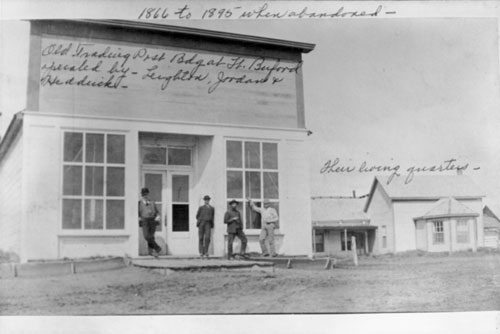
Leighton and Jordan held the contract for post trader at Fort Buford in 1875. The traders’ books reveal the purchases of soldiers, officers, and nearby residents. On January 25, 1875, Captain Powell (entry 254) purchased one ounce of celery seed, one ounce of allspice, and one ounce of cinnamon in addition to some other items. These spices would have been used by Powell’s cook to enhance the flavor of the family’s meals. The purchase of spices suggests a well-stocked pantry for the officer’s family.
On February 3, 1875, Colonel Moore (entry 264) purchased fifteen pounds of potatoes at a cost of $15. The price of these potatoes would have been beyond the ability of an enlisted soldier who made about $13 a month. In addition, an enlisted man would not have space to store potatoes. Officers had a kitchen and usually (after 1870) a pantry or cellar for storing canned goods and root vegetables such as potatoes and onions during the winter.
The post surgeon also kept records at Fort Buford. In 1868, during the period when scurvy presented a significant risk to the health of the soldiers, post surgeon James P. Kimball wrote of the soldiers’ general condition:
. . . The health of the command was usually excellent. During the winter and following spring thirty-four cases of scurvy occurred. These cases were all of a mild character and yielded readily to treatments. Dessicated vegetables were freely used and pickles issued to the entire command twice a week. There was but one death in the command during the winter. Private Thomas Standen (?) Co E 31st Infantry died December 1st 1867 of Consumption.
(p. 3, Post Returns, Fort Buford. Records of Adjutant General’s Office. Medical History of Fort Buford, 1868 – 1895 Vol 198, 199, 201.)
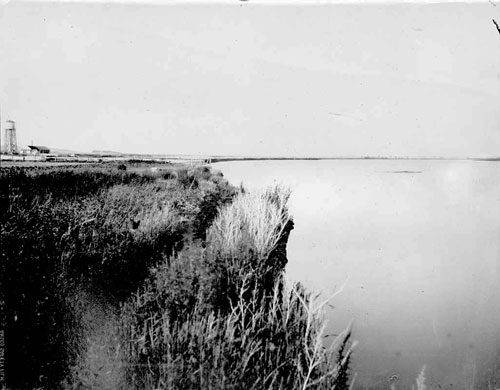
Assistant Post Surgeon Kimball recorded the progress of the Post garden in his log book of 1868.
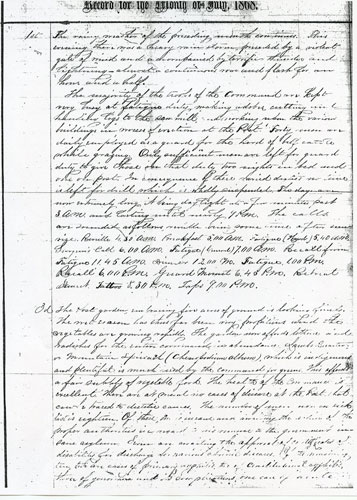
[p. 81] July 3d. The post garden embracing five acres of ground is looking finely. The wet season has thus far been very propitious and the vegetables are growing rapidly. The garden now affords lettuce and radishes for the entire command in abundance. Lambs Quarter or Mountain Spinach (Chenopodium album) which is indigenous and plentiful is much used by the command for greens. This affords a fair supply of vegetable food. The health of the command is excellent. There are at present no cases of disease at the Post that can be traced to dietetic causes. . . .
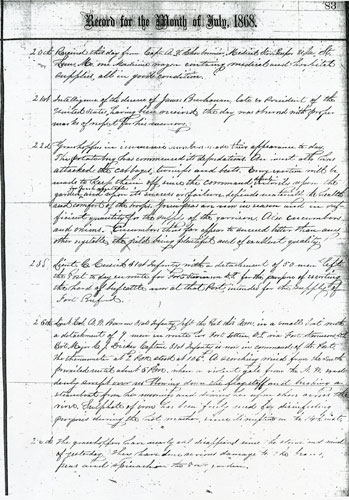
[p. 83] July 22nd. Grasshopper in immense numbers made their appearance to-day. The potato bug has commenced its depredations. An insect also has attacked the cabbages, turnips and beets. Every exertion will be made to keep these off, since the command depends entirely upon the garden for fresh vegetables and upon its success or failure depends materially the health and comfort of the troops. Green peas are now in season and in sufficient quantity for the supply of the garrison. Also cucumber and onions. Cucumbers thus far appear to succeed better than any other vegetables, the yield being plentiful and of excellent quality.
July 26th. The grasshoppers have nearly all disappeared since the storm and wind of yesterday. They have done serious damage to the beans, peas and spinach in the post gardens.
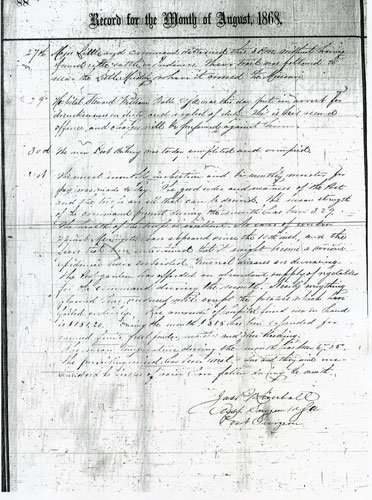
[p. 88] August 31st. . . . The Post garden has afforded an abundant supply of vegetables for the command during the month. Nearly everything plated has produced well except the potatoes which have failed entirely. . . .
The following spring, Assistant Post Surgeon Kimball wrote with confidence about the early status of the Post garden. The use of glass covers to protect early plantings from frost suggests deep devotion and advanced skill in gardening.
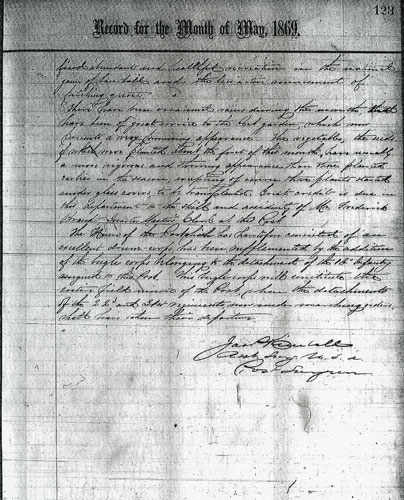
[p. 123] May 31st [1869]. . . . There have been occasional rains during the month that have been of great service to the Post garden which now presents a very promising appearance. The vegetables, the seeds of which were planted about the first of this month have usually a more vigorous and thriving appearance than those planted earlier in the season, excepting of course those plants started under glass covers, to be transplanted. Great credit is due in this department to the skill and assiduity of Mr. Frederick Brandt, Quarter Master Clerk at the Post.
Address:
612 East Boulevard Ave.
Bismarck, North Dakota 58505
Get Directions
Hours:
State Museum and Store: 8 a.m. - 5 p.m. M-F; Sat. & Sun. 10 a.m. - 5 p.m.
We are closed New Year's Day, Easter, Thanksgiving Day, and Christmas Day. We are closed at noon Christmas Eve if it falls on Mon.-Thurs. and are closed all day if it falls on Fri.-Sun.
State Archives: 8 a.m. - 4:30 p.m. M-F, except state holidays; 2nd Sat. of each month, 10 a.m. - 4:30 p.m. Appointments are recommended. To schedule an appointment, please contact us at 701.328.2091 or archives@nd.gov.
State Historical Society offices: 8 a.m. - 5 p.m. M-F, except state holidays.
Contact Us:
phone: 701.328.2666
email: history@nd.gov
Social Media:
See all social media accounts